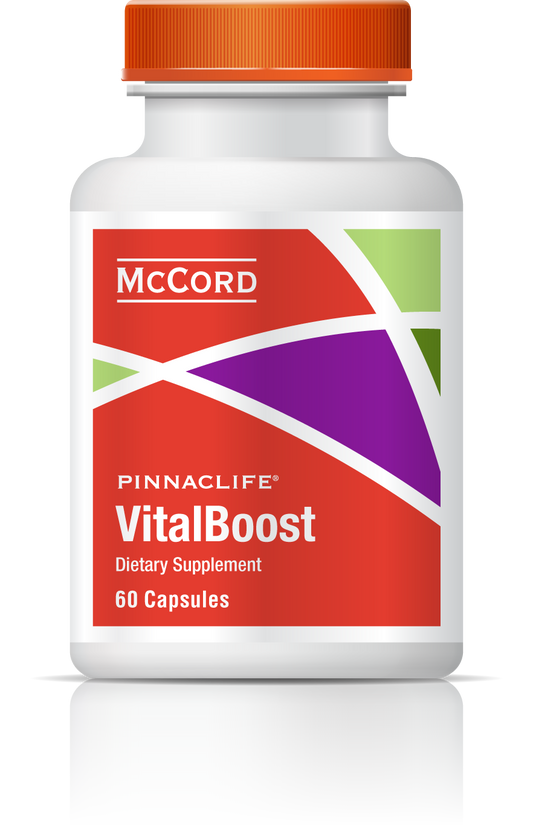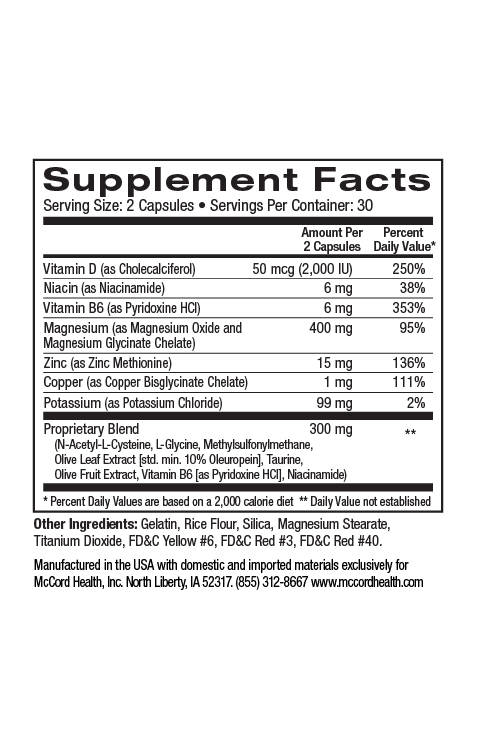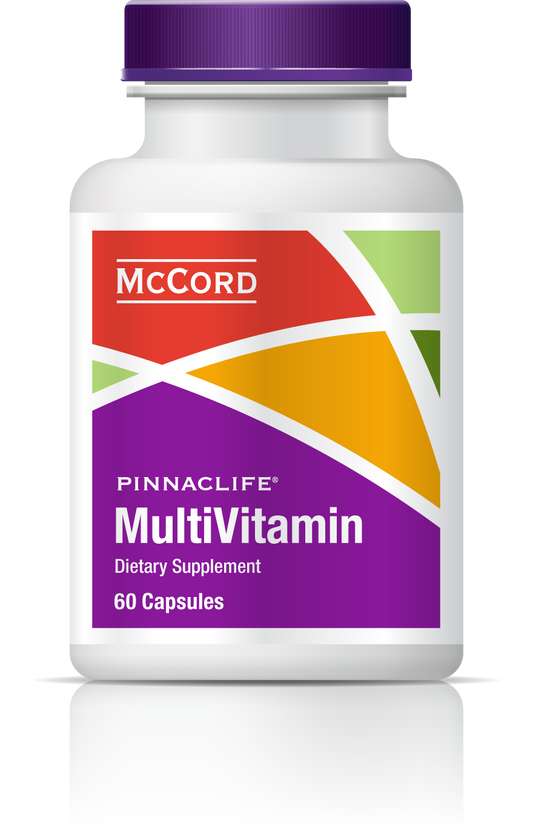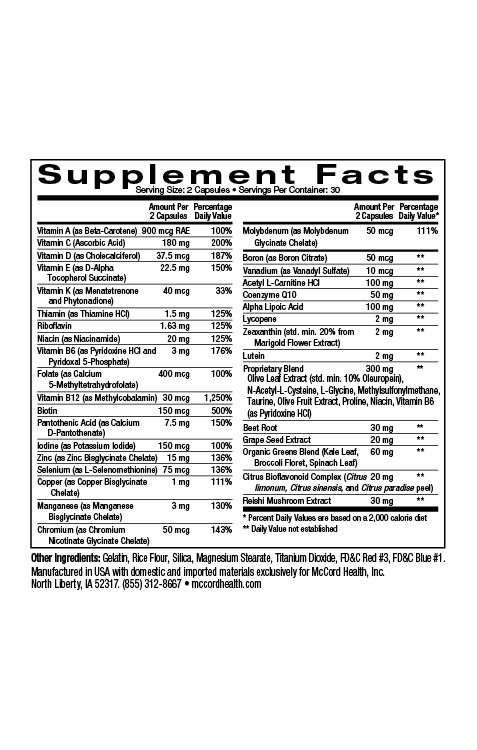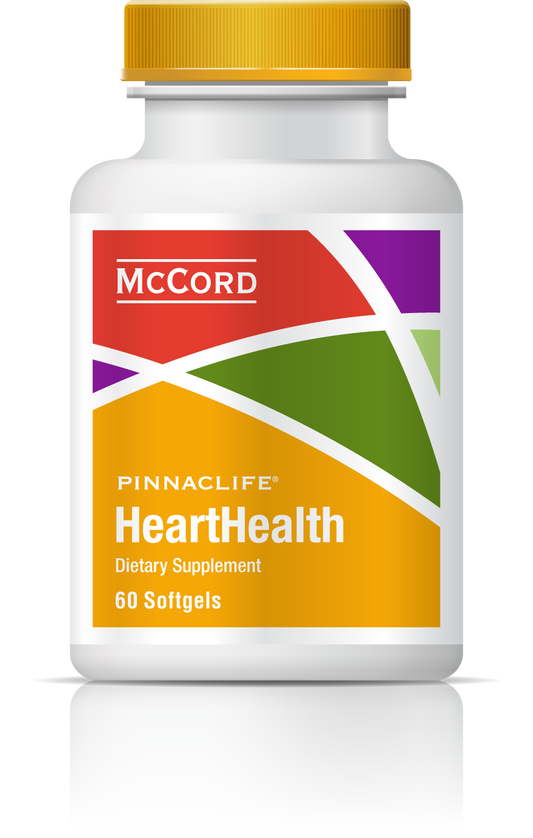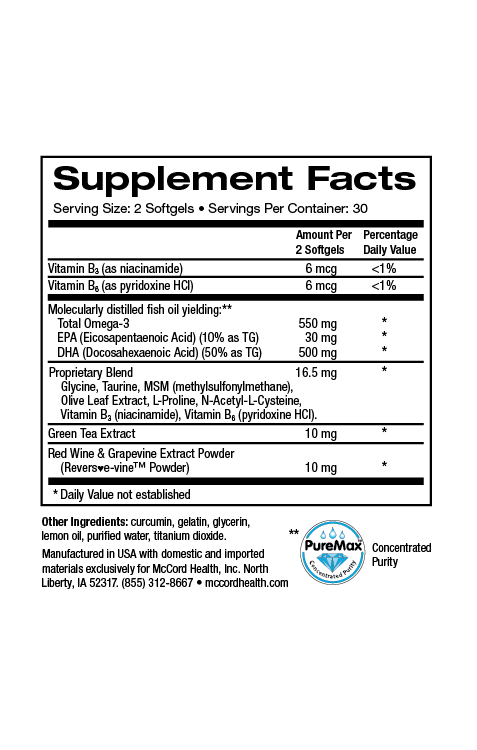Vitamin D deficiency is common and can result in unregulated cell proliferation. The beneficial effects from vitamin D are dependent on sufficient magnesium intake. Deficiency in either nutrient is associated with health problems including cardiovascular disease and conditions preceding diabetes that are associated with inflammation. Vitamin D and magnesium work together in Proprietary Blend VitalHealth to maintain healthy levels of inflammation.
- Vitamin D plays many important cellular roles
- Deficiencies in vitamin D are common and associated with many health issues
- Absorption of vitamin D is dependent on magnesium
- Magnesium activates over 300 enzymes required for health
- Both vitamin D and magnesium regulate calcium levels and are anti-inflammatory
- Magnesium and vitamin D both help maintain cellular energy
Vitamin D is a fat-soluble micronutrient that is synthesized in the human body when skin is exposed to Ultraviolet (UV) light. Under the right conditions, vitamin D can be produced from as little as 15 minutes of sun exposure to the arms and face. Unfortunately, many of us are not getting enough sun exposure due to busy schedules, increased use of sunscreens, and decreased outdoor activities to name a few things. Vitamin D is also found in fish or fish oil including cod liver oil, sardines, tuna, herring and mackerel. However, even though there are various ways to get vitamin D, vitamin D deficiency is common1,2.
Vitamin D has receptors on almost every cell in the body and vitamin D plays many important cellular roles including in the regulation of cell growth and proliferation, cell maturation (differentiation), energy metabolism and cell survival3,4. Vitamin D deficiency can result in hyperplasia (over-proliferation of cells), and research suggests that vitamin D has anti-proliferative activities that can have positive effects against psoriasis, parathyroid hyperplasia and certain types of cancer3.
42% of Americans Are Deficient in Vitamin D
According to one study, 42% of Americans are deficient in vitamin D5. In another important study the risk of death from all causes was found to be 164% higher among patients with lower levels of vitamin D, and this risk was reduced in patients with low vitamin D levels after taking a vitamin D supplement6. Vitamin D absorption in the intestine and synthesis is dependent on getting enough magnesium and deficiency in either of these nutrients is associated with various health issues and diseases, cardiovascular disease, liver disease, cancer, depression, and conditions that typically precede diabetes type 2 (metabolic syndrome) including insulin resistance and obesity7-9.
In fact, it’s absolutely essential that the right amount of magnesium is consumed with vitamin D to get the optimal benefits of vitamin D. Magnesium intake itself is also critical since it is the fourth most abundant mineral in the body and it activates more than 300 enzymes required for health10. Eating processed foods has significantly decreased the typical consumption of magnesium. In fact, magnesium is removed during food processing. Foods normally high in magnesium include almonds, bananas, beans broccoli, mushrooms and whole grains. Unfortunately, the use of pesticides and fertilizers has decreased the amount of magnesium in soil that is then taken up by plants so unless you eat organic food, you are getting less magnesium than you should7.
Vitamin D and Magnesium Help Regulate the Immune System
Both vitamin D and magnesium help maintain healthy levels of calcium in the body, and vitamin D and magnesium are both involved in regulating the immune system11-13. In fact, vitamin D and magnesium have important anti-inflammatory activities14,15. Inflammation contributes to a multitude of chronic diseases including cardiovascular disease, cancer and type 2 diabetes16, and elevating low levels of vitamin D reduces inflammation within the body. In a study involving thousands of Americans, levels of C-reactive protein (CRP), a biomarker for inflammation decreased as vitamin D levels increased17.
Inflammation is also associated with oxidative stress, which results from the inability of cells to eliminate free radicals known as reactive oxygen species (ROS)18. Not surprisingly, vitamin D has powerful antioxidant activity19. Mitochondria produce ROS during energy metabolism and can contribute substantially to oxidative stress when damaged or dysfunctional18. In fact, mitochondria are the powerhouses of cells that produce energy in the form of the molecule known as ATP. Recent evidence suggests that when magnesium levels in mitochondria are disturbed, it can result in the disruption of ATP production20. In addition, the production of ATP declines during vitamin D deficiency and sufficient levels of vitamin D help maintain normal mitochondrial control of cellular bioenergetics19,21.
Supporting Important Cellular Processes
Vitamin D3 and magnesium work together and are included in VitalBoost to help support important cellular processes that contribute to overall health. VitalBoost also includes Proprietary Blend http://www.olivamine.com, a precise blend of olive polyphenols, other important antioxidants like N-acetylcysteine (NAC), B vitamins and amino acids. The potent olive antioxidants, hydroxytyrosol and oleuropein, as well as NAC have been shown to increase the activity of important antioxidant defense enzymes like manganese superoxide dismutase (MnSOD)22-24. VitalHealth includes impeccably sourced ingredients that have undergone rigorous scientific review to prove we renew, restore and repair cells.
References
- J Pharmacol Pharmacother 2012; 3(2): 118-126.
- Nutr J 2010; 9: 65: 1-13.
- Nutr Rev 2008; 66 (10Suppl2): S116-S124.
- J Am Osteopath Assoc 2017; 117(5): 301-305.
- Nutr Res 2011; 31: 48-54.
- Prev Cardio 2012; 109(3): 359-363.
- J Am Osteopath Assoc 2018; 118(3): 181-189.
- Ther Clin Risk Manage 2008; 4(4): 827-836.
- Nutrients 2019; 11: 794: 1-28.
- Scientifica 2017; ID4179325, 1-14.
- Eur J Clin Nutr 2003; 57: 1193-1197.
- Clin Ther 2017; 39(5): 894-916.
- Am J Physiol Heart Circ Physiol 2018; 314: H753-H765.
- J Inflamm Res 2018; 11: 25-34.
- PLOS One 2015; 10(11): e0141770, 1-12.
- Ther Adv Musculoskel Dis 2013; 5(2): 77-94.
- Am J Cardiol 2012; 109(2): 226-230.
- Curr Neuropharmacol 2009; 7: 65-74.
- Eur J Appl Physiol 2019; 119: 825-839.
- Sci Rep 2016; 6: 30027; 1-11.
- J Physiol 2017; 595.22: 6825-6836.
- Age 2012; 34: 95-109.
- Mol Biol Rep 2016; 43(1): 31-39.
- J Biol Regul Homeost Agents 2014; 28: 105-116.

